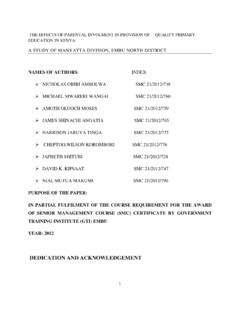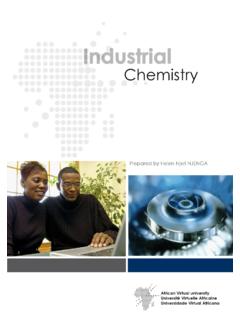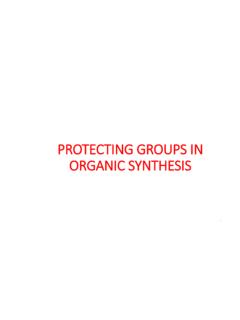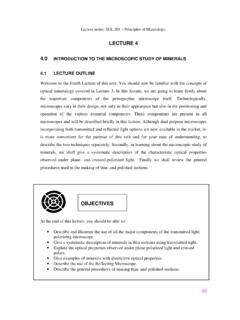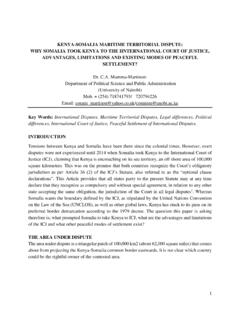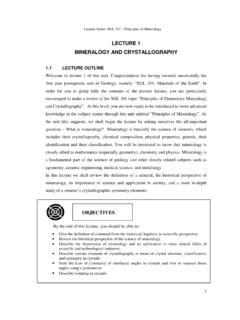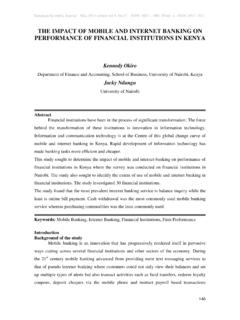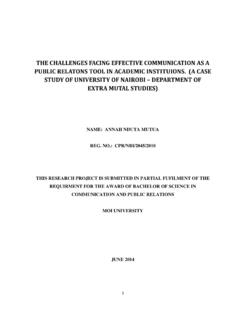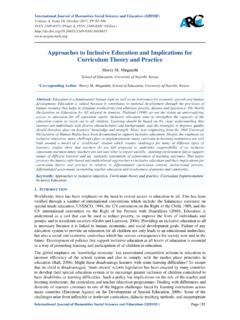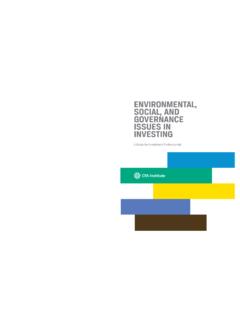Transcription of CHAPTER ONE: INTRODUCTION 1.1 Background of the study
1 CHAPTER ONE: INTRODUCTION . Background of the study In pursuit of better employee performance and customer satisfaction, organizations are looking for and investing in strategies to enhance output. Heterogeneity being a key characteristic of services, service firms are determined to optimize their employees' output in order to ensure that their customers are always contented as a result of consuming quality delivered services (James and Mona, 2011). Service firms are thus implementing Quality Control (QC) in their operations so as to ensure that their employees always perform their tasks right the first time and that their customers' expectations are always met or exceeded after consumption of the firm's products or services.
2 Quality control techniques, their capabilities and limitations should never by themselves dictate the employees' performance. It is by weaving these quality control techniques into the fabric of the employees operations that a company can bring the most value from its employee performance as observed by Aquilano and Chase (1991). A service firm that therefore integrates quality control systems directly into its employees' operations stands the best chance to optimize its employee goals, and thus increase customer satisfaction.
3 Therefore, the best model for better employee performance is to fully integrate all its quality control systems and its employees operations into one set of intimately linked processes. With customers in the service market being not only cautious with the quality of products and services they consume, but also in the manner in which the latter is delivered, and them being also key participants in the delivery system of the service, organizations are forced to implement quality control techniques in their operations in order to assist and ensure that their employees perform their respective tasks the right way the first time.
4 Quality control thus assists and ensures that the employees are able to meet or exceed their customers' expectations of the service or product by delivering the services or products effectively, that is in the quality expected by the customers (Aquilano and Chase, 1991). Quality Control Quality control is a procedure or set of procedures intended to ensure that a manufactured products or performed service adheres to a defined set of quality criteria or meets the -1- requirements of the customer (Oakland, 1986). According to Evans and Lindsay (2002), quality control is a management system for initiating and coordinating quality development, quality maintenance and quality improvement in various departments of design and manufacturing, for achieving the twin objectives of economical production and customer satisfaction.
5 In pursuit of efficiency in operational performance by organizations in terms of reduction of the total cost of quality, organizations recognize the need to implement quality control in their operations especially at the point of manufacture or operation, and not only at the final product or service stage. Organizations have it right to apply cost-effective control techniques to ensure that all goods and services are generated correctly the first time. The logic is not to ask whether the job has been done correctly, instead the prudent question to always ask first is: can we do the job correctly?
6 (Oakland, 1986). With increased competition and consumer awareness of quality, organizations are implementing quality control techniques in their operations to ensure that they perform their operations, production and delivery of their goods or services, correctly the first time. Examples of quality control techniques that can be implemented by organizations to ensure efficiency and effectiveness of its operations in terms of providing products and services that are dependable, satisfactory and economical, ensuring economic production of products and delivery of services of uniform quality acceptable to the customer, and preventing the occurrence of defect products or service, include.
7 Quality at the source, Inspection, Statistical Quality Control (SQC), Quality Circle, and Total Quality Management (TQM) (Barnes, 2008). Employee Performance Effective performance management is designed to enhance performance, identify performance requirements, provide feedback relevant to those requirements and assist with career development (Ainsworth, Smith and Millership, 2008). The idea is that performance management is best served by developing a system that is interactive and capable of resolving performance related issues.
8 Organizations make investments in their human capital to improve performance and target higher niches in the market through delivery of high quality services (Appelbaum, Bailey and Berg, 2000).Employee performance affects the overall performance of an organization and its bottom-line (Purcell and Hutchison 2007). -2- Employee performance is influenced by motivation. Armstrong (2009) points out that motivation is concerned with the strength and direction of behavior and the factors that influence people to behave in certain ways.
9 Buchner (2007) points to control theory as a basis for critically assessing performance feedback provided through performance management. Stearns and Aldag (1987). define feedback as information that is received about activities in the organization. The information about activities is fed back to key decision makers who then use it to correct situations in the organization. On-going feedback and support are considered an absolute necessity though the extent to which it takes place is questionable (Coens and Jenkins, 2000).
10 The annual appraisal remains the dominant mechanism whereby objectives are set and feedback is provided (Armstrong, 2009). In situations where performance is less than expected a reappraisal will allow employees to see how their performance is reviewed and what is required to engender improved performance (Williams, 2002). Hospitality industry Hospitality is the relationship process, presentation, formality and procedure experienced between a visitor/ customer/ guest and a host. It specifically includes the reception and entertainment of those who require or invited to experience an organization's service.
